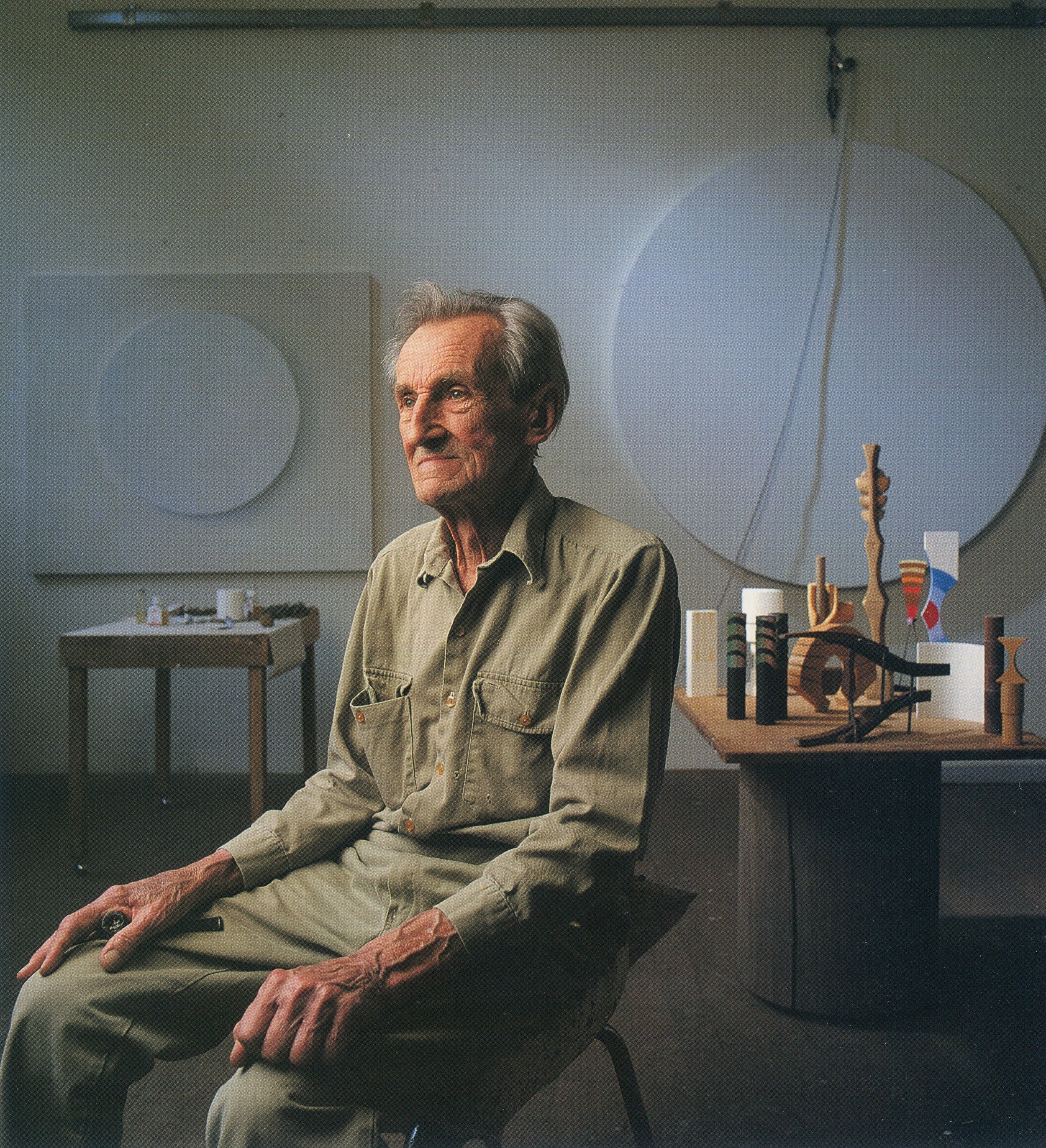Howard Taylor
“For his outstanding contributions to the visual arts, his achievements as a painter, sculptor, graphic artist and teacher and particularly for his public artworks and strong personal interpretations of the south-west.”
Howard Taylor is recognised as one of the nation's most significant visual artists. His relationship to the local natural environment has been the unifying theme of his artistic pursuits and life choices. For the past fifty years Taylor has lived close to the natural environment, choosing to live in the bush in Bickley and later in the forests of Northcliffe. The Western Australian landscape is the constant subject of his observation, the source of his inspiration and the subject by which he offers others the opportunity to discover and reflect on their own sense of being in a place.
Howard was born in Hamilton, Victoria, in 1918 but moved to Western Australia in 1932. As a boy, he was interested in aviation and spent time drawing and designing models often according to aerodynamic principles. After attending Perth Modern School, he enlisted in the Royal Australian Air Force for flight training. Howard describes this time as "one of the happiest periods of (his) life." Upon transferring to the Royal Air Force, he was commissioned to a squadron providing air support in France just prior to the declaration of war in 1939. In May the following year, Howard's plane was shot down and he was interned for the duration of the war. As a prisoner, Taylor reflected on his life direction:
“My five years in prison of war camps was the most important time of my life artistically, because that's when I did accept the fact that I might head that way and I got deeply involved in it.”
During his imprisonment, Howard Taylor honed his drawing skills with materials provided by the Red Cross and utilised the plentiful supply of willing life models. Many of these early drawings are in the State Art Collection. He was also interned with other prisoners who shared an interest in art, including fellow Western Australian artist, Guy Grey-Smith.
When the war ended, Howard studied at the Birmingham College of Art. Here he learnt to cope with the image problems of landscape and was influenced by renowned English painters, John Constable and Samuel Palmer. He was also attracted to the work of Paul Nash, whose images allowed for natural forms to shift between the objective and symbolic. While in England, Howard developed a critical awareness of art history and frequently visited the National and regional galleries.
Howard returned to Western Australia in 1949 with his wife Sheila and settled in Bickley on twenty-four hectares of bush. In 1951 he began teaching painting and drawing at Perth Technical College. Later he taught at WAIT (now Curtin University of Technology) and the University of Western Australia at the School of Architecture. For approximately ten years, Howard mainly worked in tempera which demands a technically disciplined approach to the composition and the execution of the work. He planned his work in a detailed and three-dimensional way which led to an exploration of sculpture. In 1955 Howard began to introduce and combine three- dimensional objects in his paintings and sculpture. As he explored the interrelation of space and structure, his subjects were almost exclusively drawn from nature.
By the late 1950s, Howard Taylor had established himself as an artist of considerable reputation in Perth. In 1960, he held his first major solo exhibition and began to develop a number of significant public art works. Sculpture became a preoccupation for Taylor in the 1960s and 1970s. In particular he used wood to invoke the bush through disciplined formal shapes. Taylor's dedication to the value of public art remains unparalleled in Western Australia and he regularly rose to the challenge of solving often problematic design briefs. Between 1960 and 1967, Taylor was actively engaged in producing public commissions, bringing art to non-specialised audiences. His major public artworks include Tree Forms, Way Through, located at Curtin University of Technology and The Black Stump, an outstanding work designed for the AMP building in Perth.
With encroaching suburbia and his increasing reputation, Howard relocated to Northcliffe in 1968. Since the mid - seventies, painting re-emerged as his primary focus. The work, while always based on the direct observation of natural phenomena, often alternates between abstraction and stylised interpretations of the natural world. Many of Howard's works invite a meditative response from the viewer. We are actively engaged in the process of perception and with patience are reminded that "If the viewer wishes to go further than just the visual acceptance there is more to discover."
Taylor's commitment to achieving excellence and creating works based on his experience of the Western Australian envi- ronment remains an exemplary model for younger artists. He is represented in the Art Gallery of Western Australia, the National Gallery of Australia, Art Gallery of New South Wales, National Gallery of Victoria, Australian War Memorial, New Parliament House-Canberra, the University of Western Australia, Curtin University of Technology, the Kerry Stokes Collection and the Holmes à Court Collection. His work was the subject of two major retrospective exhibitions organised by the Art Gallery of Western Australia in 1985 and 1998. Howard Taylor has received many awards and honours including the Australia Council Inaugural Emeritus Award in 1986. In 1989 he was made a Member of the Order of Australia. He also received an Honorary Doctor of Letters from the University of Western Australia in 1993 and an Honorary Doctor of Technology from Curtin University in 1998 to acknowledge his life-long contribution to visual culture.
Reference; Howard Taylor (videorecording)/ research and interview by James Murdoch: producer Peter Campbell, Australian Council, 1986. ibid.
State Art Collection - Art Gallery of Western Australia. Howard Taylor, Sculpture Proposal for the New Parliament House in Canberra 1998, cited in Ted Snell's "Howard Taylor: Sphere/disc/planet/sun/object/figure" Praxis, No 20.
Howard Taylor

